TownsBattonya
The beginnings of the history of Battonya date back before the times of the Hungarian conquest (986). In the 15th Century there were five settlements in the territory of today’s town, most of them were likely the property of lord János Hunyadi. Today’s layout was planned by engineers from Vienna, in 1808. In 1839 Battonya received the rank of borough and the right to organize a market.
Sights: Korona hostel Roman Catholic Church Reformed Church Romanian Orthodox Church Serbian Orthodox Church Molnár C. Pál Art Gallery and Memorial House (Molnár C. Pál, born in Battonya, a Europe-wide famous master of XX. Century Hungarian painting, painter of saints, beautiful woman and horses.) Lido and Thermal Bath (with thermal water)
(Source: battonya.hu)
Békés
Békés, lying at the left bank of the river Kettős-Körös is the town giving its name to the county. Due to its good geographical location (rivers, good plow-land) it has been an inhabited area as of the Neolithic ages. It was a seat of the county, a count (ispán) castle and the seat of the Deanery. In the 15th Century it was the property of the Maróti family, then in 1566, with the takeover of Gyula Castle, Békés also got into the hands of the Turks, who built a plank fortress in the town. In 1695 Békés was liberated along with Gyula Castle, and the county became royal property. In 1720, Békés County got into the hands of János Harruckern as a royal gift. The farm-stead style settlement character can be traced back to this period. By right of inheritance, Békés and its surroundings got into the hands of the Wenckheim counts in the 18th Century. Floods of the Körös and its branches were a constant danger. Békés preserved its small town atmosphere. Since the over-industrialization lagged behind, its intact natural values make it attractive.
Sights: Jantyik Mátyás Museum Music Days in Békés-Tarhos (In memory of Kodály, great Hungarian composer, who taught at the local music school) Reformed Church (monument) Madzagfalvi Days (festival in the first half of September) Békés Pálinka Distillery and Rail History Park (the Békési plum pálinka is a registered specialty of Hungary, a hungaricum.) Wickerworks workshop Békés Country House, with the workshop of János Kovács, local carriage-making master. Dánfok Holiday Center at the banks of the Kettős-Körös (wooden houses, camping, beach, watersports, events) Dam (industrial monument) Port for small boats, kayak and boat rent at the dam Excellent fishing places
(Source: bekesvaros.hu)
Békéscsaba
A settlement inhabited as of the late Bronze Age. It was ruled by the Huns in the 5th Century and later the Gepids, who were defeated by the Pannonian Avars in the 6th Century. The Hungarian conquerors arrived to the region of the Körös rivers in the 10th Century. Mentioning the name “Csaba” dates back to 1332. Csaba is a Turkish origin given name for a person, meaning “gift”. In the 16th Century the locals paid taxes to the Sultan. During the Turkish wars, the area became uninhabited. Re-settling the city was carried out by János György Harruckern. It became a mail station in the 18th Century. In the 19th Century population exceeded 22 thousand; the city was in the intersection of main roads. The first steam engine arrived at the Békéscsaba train station on 25 October 1858. Building the railway meant much, the first industrial plants were built (textile industry, printing, furniture factory, mills, cart making workshops, later a concrete factory.) Csaba got richer, its image got nicer. The city suffered much because of the First World War, but avoided major military actions of the Second World War. Békéscsaba became the seat of the county in 1950, population raised from 42 thousand to 65 thousand. Békéscsaba is one of the most dynamically developing cities of the county.
Sights: Jókai Theater, the first brick theater of the Great Plain. Élővíz-channel, with statue-promenade Széchenyi-grove, with eco-tourism visitor’s center Fiume Hotel City Hall (façade designed by Ybl Miklós) Lutheran Great Church and Small Church Slovakian Provincial House Grain Museum Árpád Spa Csaba Park (thematic park dedicated to the “csabai” sausage) Airport (sport aviation, sightseeing, parachuting) Munkácsy Mihály Museum and Memorial House (the famous Hungarian painter spent his orphan childhood years in Békéscsaba) City Hall evenings (june) International Music Festival (august) Csabai Sausage Festival (october)
(Source: bekescsaba.hu)
Dévaványa
Typical settlement of the Great Plain, lying in the plain bonded by the Körös and the Berettyó. The settlement has been inhabited for thousands of years; its first written memories are from the 1330’s. It is called Dévaványa as of the Turkish times (16th Century) The most significant value of Dévaványa is the natural environment, at its borders the “Second Hortobágy” stretches: huge turf full of medicinal herbs, it is a nature protection area.
Sights: Bustard reservation Hunting Lido Reformed Church Catholic Church Bereczki Imre Region History Collection
(Source: devavanya.hu)
Doboz
Situated 13 kilometers from Békéscsaba, at the banks of the Kettős-Körös. In Szanazug, where the Fehér-Körös and the Fekete-Körös meet, a popular holiday resort has been developed. Szanazug belongs to Doboz regarding public administration, The Doboz Castle Park with ancient trees has been a nature conservation area since 1979. The granary built in 1863 is a famous creation of Miklós Ybl, it is a monument of agricultural history.
(Source: doboz.hu)
Füzesgyarmat
Füzesgyarmat, the 6200 soul small town is situated in the northern part of Békés County, 60 kilometers from Békéscsaba and 75 kilometers from Debrecen. It is one of the oldest inhabited settlements of Békés County.
Tourism is significant here, as it possesses beneficial effect thermal water. The Castle Park Bath is visited by 100-120 thousands of people every year. There is a motel in the territory of the Bath, and a 3 star hotel and camping nearby (Gara Hotel)
Sights: - Galambos Carriage making workshop and Carriage Museum - Füzesgyarmat Riding Days - Reformed Church - Unitarian Church - Provincial house
(Source: fuzesgyarmat.hu)
Gyomaendrőd
Situated at the left bank of the Hármas-Körös, which is one of the most beautiful waterfront in Békés County. The settlement is crossed with 16 backwaters. There is a spa and lido in the town.
Gyomaendrőd itself is a young settlement; it has been established by the union of Gyoma and Endrőd townships. These town parts have been inhabited as of the oldest times.
Sights: - Kner Printing Industry Museum - Country House of Endrőd - Liget Spa and Camping
(Source: gyomaendrod.com)
Gyula Situated at the left bank of the Fehér-Körös. Gyula is one of the favorite holiday towns in Hungary, a tourist center of Békés County. Since 1970, it is an important border crossing towards Romania. The bathing town famous of its thermal water, with its pleasant climate, shady parks and peaceful atmosphere is an ideal place for recreation, made even more attractive by a rich cultural heritage. Gyula is the birthplace of Ferenc Erkel, famous Hungarian composer of the Hungarian National Anthem, and founder of the National Opera. His birthplace is a museum now (Erkel Ferenc Memorial House) Sights, places of interest: - Gyula Castle – 600 years old gothic plain terrain brick castle - Gyula Castle Bath – a healing place since 1985 - Gyula Castle Theater - Outdoor events, festivals in the castle park - Békés County Archives - Erkel Ferenc Memorial House - Ladics House - Hundred Years Old Confectionery with original furniture and museum of confectionery, confectionery with historical fantasy names, cakes, made of selected ingredients.
(Source: gyula.hu, visitgyula.com)
Kondoros Situated along the main road 44, south-east from Szarvas. Founded in 1241 during the reign of the first Hungarian king, Saint Stephen and demolished by the Mongol invasion of Europe. It was a significant settlement in th 15th Century, Turkish census counted 70 homes. After the Turkish devastation baron János György Harruckern received it as a gift. Places of interest: - Kondorosi Inn, for which the legend of Sándor Rózsa, outlaw of the plains is connected.
Event: - Kondoros “Betyár” Days
(Source: kondoros.hu)
Lőkösháza
Places of interest: - Vásárhelyi-Bréda Castle, awaiting its visitors after a renovation with a Békés County ethnographic exhibition, a restaurant, a Focault-pendulum showing the rotation of the Earth, and unique light painting. - Róbert Corvus-Kora lives and works in Lőkösháza, who created a history theme picture-series.
(Source: lokoshaza.hu, bredakastely.hu)
Mezőberény The small town with 12 thousand inhabitants is situated 20 kilometers from Békéscsaba. Mezőberény was an inhabited place even in the Stone Age. During the reign of the Árpád dynasty there was a village called Berény, which was destroyed during the Turkish occupation. The abandoned settlement was re-settled in 1723 with Slovakian, German and Hungarian inhabitants. Mezőberény is an important Petőfi memorial place, as the great Hungarian poet was connected to the town with relations and friends. Sights: - Bodoki Károly Water Management Museum - Orlai Petrich Soma Museum (ethnographic collection, Holocaust-memorial) - Wenckheim-Fejérváry Castle - Thermal bath (Source: mezobereny.hu)
Mezőhegyes The middle-age Mezőhegyes was destroyed by the Turkish wars, but it has reborn later. The horse stud of the Austro-Hungarian Empire was shattered by wars. Emperor Joseph II. accepted the proposal of captain József Csekonics; an imperial stud has to be founded. Upon imperial order the establishment of the military stud started in 1784 in the Mezőhegyes plains. The Mezőhegyes stud is a very important breeding center today; its famous breed is the Nonius. Places of interest:
- Central Restaurant - Oat silos - Mail Station - Triumphal arch - Carriage Museum - Indoor riding hall - Békás-lake (fishing lake) - Giant sycamore tree
(Source: mezohegyes.hu)
Orosháza
Second largest and most industrialized city of Békés County, but with a significant role in agriculture as well.
Archeological findings prove that the city and its surroundings were inhabited even in the Neolithic Age, but the first written memories date back to 1466. The history of today’s town starts with the re-settling of the country in the 18th Century, when serfs persecuted from Zomba (Tolna County) due to their Lutheran religion occupied the Orosháza plain. Sights, places of interest: - Lutheran Church - Darvas József Memorial House - Szántó Kovács János Museum (town history exhibition) - City Gallery - Petőfi Community Center - Well Museum (the only one in Hungary) - Rágyánszki Arboretum - Historical Memorial Park - Modern main square - Orosháza-Gyopárosfürdő – Thermal spa, park beach and adventure pools, holiday resort - Events: European Bread Festival, equestrian championships, festivals - Culinary specialties: bread and goose liver OROSHÁZA-GYOPÁROSFÜRDŐ
The holiday resort as well as a medicinal and health preserving center known as “The pearl of the Great Plain” can be found 3 kilometers from the center of Orosháza, in a nature protection area. Accommodation is provided by hotels, guesthouses and a camping.
The symbol of Gyopárosfürdő is the former water tower, now operating as a look-out tower, which provides a magnificent view to the lake system. This look-out tower houses the permanent exhibition introducing the history of Gyopáros.
(Source: oroshaza.hu, gyoparosfurdo.hu)
Pusztaottlaka
Pusztaottlaka settlement can be found in the South-East part of Békés County. It is situated in the Békés-upland small region, on the alluvial fan of the Maros, in a plain free of any floods.
The Likefest Park operates in the town, with a zoo and a petting zoo. Besides ancient Hungarian domestic animals, kangaroos, ostriches and other exotic animals are awaiting the guests. Sarkad The city of Sarkad is situated in the North-East part of the County, at the right bank of the Fekete-Körös, next to the Romanian border. It is 30 kilometers from the seat of the county, and 16 kilometers from Gyula.
The best known sight of the city is the Reformed Church in the city center, rebuilt in 1867, famous of its nine special wooden towers. In the Márki Sándor Region History Museum an archeology exhibition introduces the age of the Migration Period, the Hungarian conquest, and artificial memories of the Turkish times.
(Source: sarkad.hu)
Szabadkígyós
The settlement was inhabited even in the age of the Hungarian conquest. The first written data is from 1398.
A place of interest in Szabadkígyós is the biggest and most beautiful castle of the Great Plain, creation of Miklós Ybl, famous Hungarian architect. Upon request of the client Krisztina Wenckheim, the castle has the same number of windows as many days are in a year, 365.
The nature protection area next to the settlement hides rare plants of the steppes.
(Source: szabadkigyos.hu)
Szarvas
Szarvas is a small waterfront town of magnificent natural givens. In the life of the city, a significant role is played by the Körös-oxbow. As the water surface is almost 30 kilometers long, it is the 5th biggest still water in Hungary. As the findings of the Körös culture prove, the area of the settlement has been inhabited since the last millennium of the Prehistoric Age. After the Turkish wars, Slovakian families from Upper Hungary moved to Szarvas. A determining character of the city is Sámuel Tessedik, Lutheran priest and reformer of agriculture, who established the first agro-economical school of Europe in Szarvas in 1780. It has preserved its school-town and agricultural character until now. Today high level agricultural education is continued in Szarvas.
Sights: - Arboretum of Szarvas - Mini Hungary Model Park (Here we can see the miniaturized copies of the best know buildings of Hungary, with interactive elements, e.g. small moving vehicles.) - Windmill, the center of the Kingdom of Hungary, geometric center of the Carpathian Basin. - Árpád Hotel (today it is a - Locust tree of Tessedik - Mittrovszky castle - Slovakian Provincial House - Lutheran New Church - Lutheran Old Church - Anna grove, with a natural science educational facility and an eco-tourist nature trail. - Bolza-castle - Ruzicskay Gallery - Tessedik Sámuel Museum . Events: - Harvest Festival - Folk Music Festival - Szarvas Plum Days (an important fruit of the city is the plum, from which jam and pálinka is made) (Source: szarvas.hu) Szeghalom Szeghalom is situated in the Northern part of the county, where the Sebes-Körös and the Berettyó meet. The bends cut during the control of the rivers are nice places for hiking, and they are beloved fishing paradises. Szeghalom has been inhabited for 7 thousand years, it is the oldest settlement of Békés County. Sights: - Sárrét Museum - Wenckheim-D’Orsay-castle - Kárász-castle - Roman Catholic Church - Reformed Church - Várhely youth camp (rowing, riding, bicycle tours and camps)
(Source: szeghalom.hu)
Tótkomlós
The small town was founded in 1746 by 80 Slovakian families settled here by baron Rudnyánszki.
Sights, places of interest: - Lutheran Church - Árpád-Age Church (Nagykopáncs) - Slovakian Provincial House - Komló guesthouse - Rózsa Spa - tour routes (riding, bicycle, walking) - hunting
(Source: totkomlos.hu)
Vésztő
The most important tourist attraction is the Vésztő-Mágor Historical Memorial Place. In the nature protection area archeologists found traces of a seven thousand years old culture, and excavated the ruins of the Csolt Monastery.
A nature trail leads through the Mágor-steppe
In the Sinka István Memorial House, a Local History Museum can be found. (Source: veszto.hu) 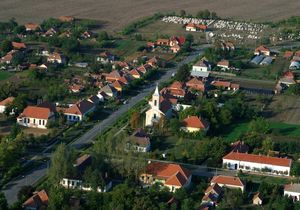 Almáskamarás
Almáskamarás
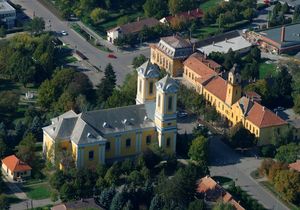 Battonya
Battonya
Békés
Békés
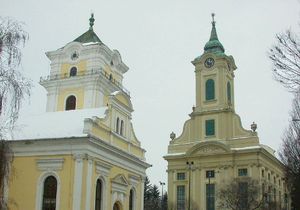 Békéscsaba
Békéscsaba
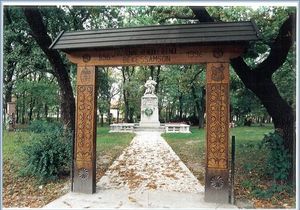 Békéssámson
Békéssámson
Békésszentandrás
Békésszentandrás
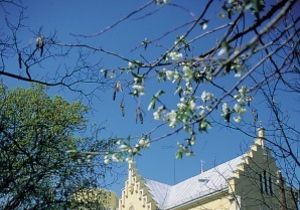 Bélmegyer
Bélmegyer
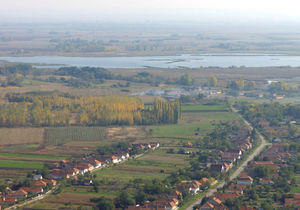 Biharugra
Biharugra
Bucsa
Bucsa
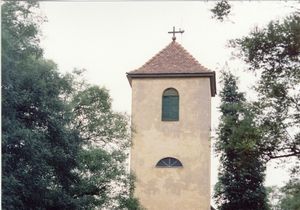 Csabacsűd
Csabacsüd
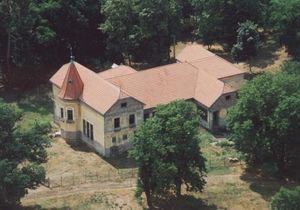 Csabaszabadi
Csabaszabadi
Csanádapáca
Csanádapáca
Csárdaszállás
Csárdaszállás
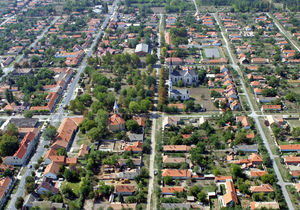 Csorvás
Csorvás
Dévaványa
Dévaványa

Experience it!
Bucket List
Splash!
Bathing is good!
Spas in Békés county
Get Healed by water!
Adventure spa
Spas with medical background
Accomodation with medical background
Relaxing wellness
Open water beaches
Legendary heritage
Handprint of the ancestors
Built heritage
Natural values
Historical memories of Agriculture and Industry
Handicraf in Békés county
Urban Legends
The castles of Békés County
Bekes county, the Loire-valley of Hungary
Genteel merriment
Walking tour
Walking stick in Békés
Saddle
Releasing my horse
Riding tours
Riding events
Riding lessons
Riding carriage
Pedal
Cycling in bekes
Bicycle Accomodation
Bicycle rent and service
Rowing
Waves of the Körös
Accomodation by the waterfronts, camping sites
Ports, boat rent
watertour routes
Fishing
Békés County, paradise of fishermen
Fishing waters in Békés County
Fishing tickets
Accomodation on the waterfront
Programs for women
Hunting
Hunting Associations
Accommodation for hunters
Arriving with family
Tourism of profession (MICE)
Conference and training
Team Building
Business hotel
Explore it!
Regions
Towns
Sleepy on it!
Hotel 4*
Hotel 4*
Hotel 3*
Hotel 3*
Find it!
|



